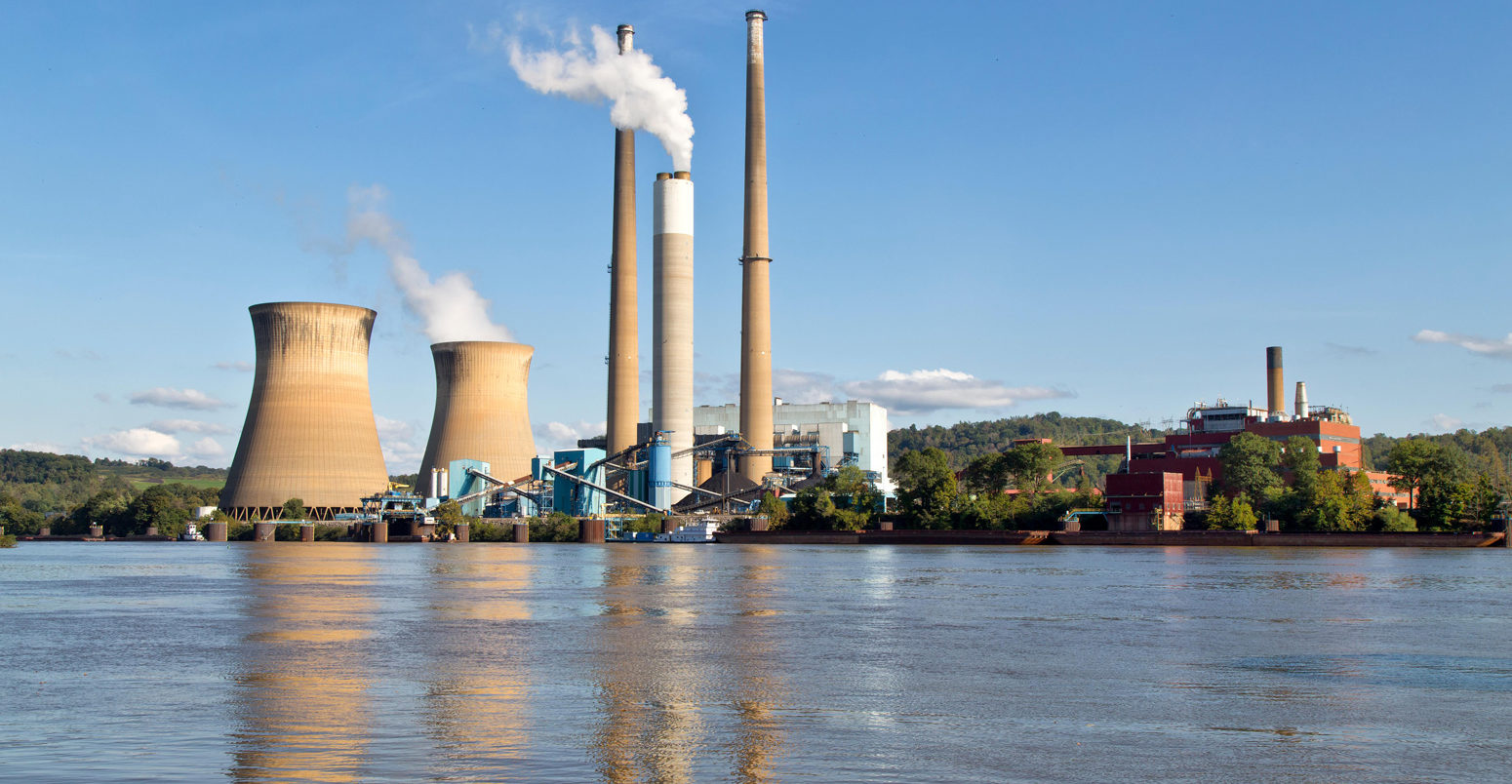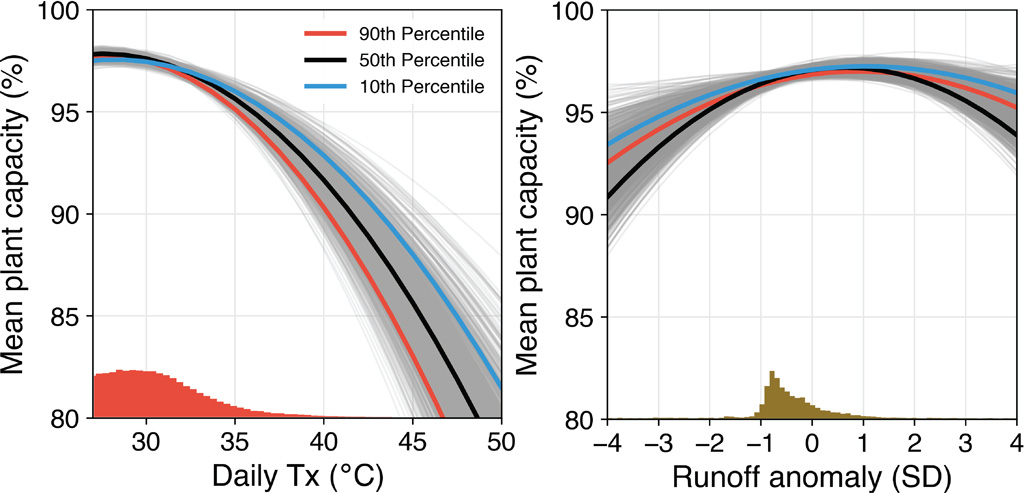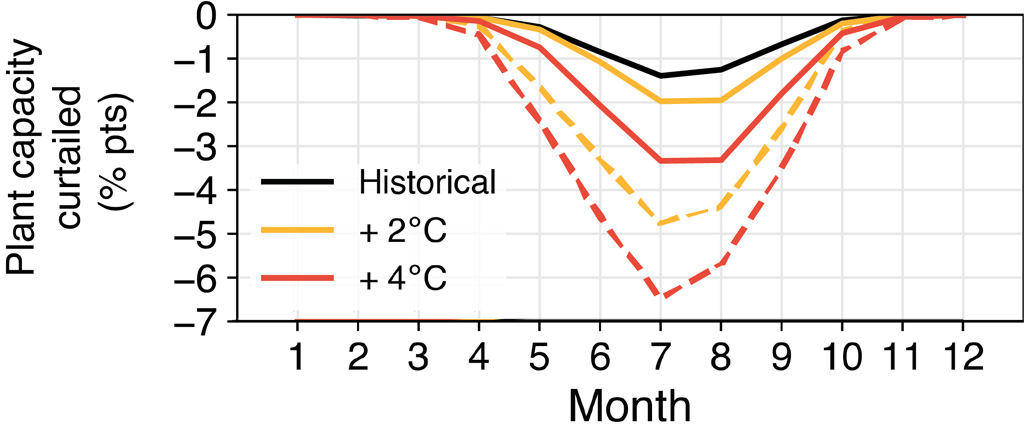
Guest post: How global warming is making power plants produce less electricity

Guest authors
02.15.21
Guest authors
15.02.2021 | 8:00amThe coal, gas and nuclear power plants that generate most of the world’s electricity have to be kept cool in order to function properly. However, this will be increasingly challenging as the world gets warmer.
Waste heat from these facilities is typically released into the atmosphere or nearby water sources. During heatwaves or droughts, excessive heat or a lack of water makes it much harder for plants to be kept cool.
When this happens, the plants must be curbed, meaning electricity output is cut. This often comes just as electricity demand peaks due to people’s increasing reliance on air conditioning to keep cool.
In a new paper, published in Environmental Research Letters, we find that in a warming world, hundreds of additional power plants would need to be constructed in the coming decades simply to make up for this lost power.
However, this is not the only option. If nations instead focus on technologies such as solar and wind, which produce fewer emissions and are less impacted by hot weather, the electricity sector will be both less of a contributor to – and victim of – climate change.
Keeping power plants cool
In thermal power plants, just 30-50% of the energy stored in the coal, gas or nuclear fuel is used to generate electricity. The rest of the energy is dissipated as heat – and lots of it.
These plants are usually located along rivers or lakes and use water in once-through or recirculating cooling systems to remove this waste heat. Rising temperatures make this less efficient.
On the hottest days, some power plants may have their output curbed or even need to shut down entirely because they cannot keep themselves cool. This happened to nuclear plants in France and Germany during the 2019 heatwaves.
Estimating the real-world response of power plants to extreme weather is difficult due to a lack of daily-scale power plant outage data.
However, in our study we were able to leverage daily-scale outage data from the Energy Information Administration on all nuclear power plants in the US and from the European Network of Transmission System Operators for Electricity on specific outages at a subset of EU thermal power plants.
Together, these two datasets enable us to construct observed relationships between daily power plant capacity reductions and weather conditions, as the charts below show.
The figure on the left shows how average plant operating capacity declines as daily high temperatures increase. The figure on the right shows that at very low runoff values, such as during a drought, or very high runoff values, such as during a flood, average plant capacity declines.
Because we only have a small data sample (the binned temperature and runoff distributions in each panel show all observed temperature and runoff values in our dataset), there is uncertainty in our estimate about the relationship between plant capacity and weather. This uncertainty can be seen in the grey shaded area in each panel.

The chart shows that, historically, thermal power plants are much more likely to have their output curbed on hot days. For example, when temperatures exceeded 40C, power plants tend to operate at 90-93% of their full capacity.
That may not sound like a large loss, but heatwaves often cover a wide area, meaning dozens of power plants could simultaneously experience curtailment.
When combined with the fact that electricity demands are highest on these hot days as people switch on their air conditioners, it has the potential to cause a problem.
Global warming and electricity supply
Temperatures are rising and heatwaves are becoming more frequent. In some regions, these conditions are already approaching the limits of human tolerance.
Our defence against dangerously hot weather is air conditioning and, as the world gets warmer and richer, its use is projected to soar. Air conditioning already accounts for about 10% of electricity use in the US.
Meanwhile, power plants are likely to be affected by this extreme heat more often. We assessed how much by using projections of temperature and runoff from the suite of climate models used in the Intergovernmental Panel on Climate Change (IPCC) fifth assessment report (AR5).
We estimated power plant capacity on the hottest day of the year in a historical climate, between 1981 and 2005, and at 2C and 4C of global warming above pre-industrial temperatures. The results can be seen in the chart below, with capacity dipping during the hottest summer months.

At 2C of warming, power plant capacity is curbed by about 2% on average and by up to 4.5% in a worst-case scenario. At 4C this is much larger, with a 3.3% drop on average and 6.5% in the worst-case scenario.
To put these numbers in context, French nuclear power generation was reduced by about 8% in 2019 due to a heatwave. In a warmer future, this would be even larger – between 9-13%.
This electricity supply gap means that society will likely have less power to run air conditioners during future heatwaves, increasing the risks of heat-related illness.
The fact that these risks largely fall on disadvantaged communities means focusing on electricity access is all the more critical to climate equity and justice efforts.
Decarbonisation is a win-win
The impact of future power restrictions depends on infrastructure decisions made today and, specifically, the amount of electricity that society generates using thermal plants.
More global warming and more thermal power generation will both lead to more restrictions.
To assess future electricity restrictions, we merged our projections of power plant capacity with scenarios that describe possible trajectories of decreasing, or increasing, global thermal power generation.
According to our analysis, the amount of electricity produced using thermal power plants is the primary factor in the scale of future restrictions.
For example, in a scenario where thermal power generation is mostly phased out and replaced with renewables by the end of the century – as shown by the blue line in the chart below – global restrictions on hot days could be cut by more than 50% from today’s level, despite a greater number of heatwaves.
In contrast, if thermal power generation increases in the future – as shown by the red line in the chart below – restrictions could more than triple from today’s level by the end of the century.

Electricity generation capacity lost due to restrictions would have to be compensated for – and this could mean building more power plants to make up for capacity lost at other facilities.
Under a scenario of increasing thermal power generation, these restrictions could require additional generating capacity of 125-200 gigawatts (GW) of electricity – equivalent to 250 to 450 average-sized power plants by the end of the century.
The electricity sector is both a cause and a victim of climate change, but how much global electricity generation is impacted by warming is very much dependent on the decisions that society makes in the near future.
Advances in renewable technologies mean that alternatives are available that use less water and are less impacted by hot weather. Moreover, the faster the transition to zero-carbon power, the less temperatures will rise and the faster the vicious cycle will be broken.
Coffel, E. D. and Mankin, J.S. (2021) Thermal power generation is disadvantaged in a warming world, Environmental Research Letters, doi.org/10.1088/1748-9326/abd4a8
-
Guest post: How global warming is making power plants produce less electricity
-
Guest post: How global warming threatens the world’s power plants
